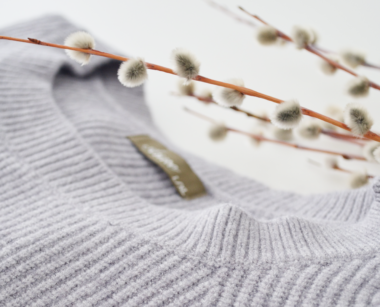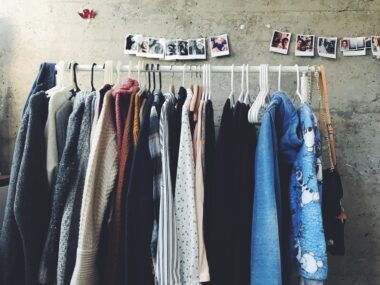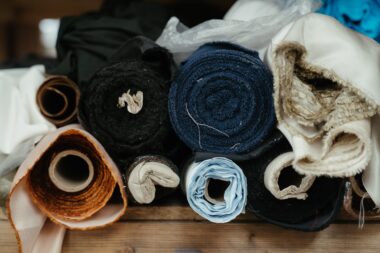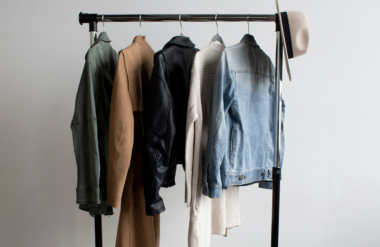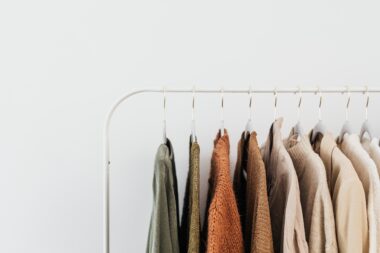Sweater season is upon us (in Canada at least) and in true fall fashion form we’re all craving some cozy attire. Before the winter takes hold and we go into hibernation mode, now is the time to take stock of what we have and make any additions to our fall wardrobe in a sustainable way.
Impact Of The Clothing Industry
It’s no secret that giants in the fast fashion industry have been damaging the environment with their excessive production for years now. With the fast paced cycle of new styles, we now wear our clothes an average of only seven times before we get rid of them. Fashion now accounts for almost 10% of global carbon emissions, 300 million tons of plastic and approximately 20% of the wastewater worldwide. On top of that, 85% ends up in landfills or is incinerated.
Instead of shopping fast fashion this fall, try spicing up your wardrobe with more sustainable options. From repurposing your summer clothes to thrifting new-to-you pieces, we’ve gathered a list of some of our favourite eco-friendly ways to transition to a fall wardrobe in style.
Eco-Friendly Ways To Spice Up Your Wardrobe

The Planning Stage
1. Take Stock
Start by taking inventory of what you already have and what you want to keep for this season. Once you know what you have it’ll be easier to identify any gaps. It’ll also help you identify any pieces you know you want to wear more this season.
2. Plan For Your Lifestyle
As lovely as it looks on the model, there’s no point adding a ballgown to your fall wardrobe if you’re unlikely to be going to many balls this season. Similarly, if you work from home, buying a new suit when you almost exclusively wear sweats isn’t going to help anyone. Think about what you’re spending your time doing, and what you need from your clothes while doing those things, before adding anything to your wardrobe. If you’re a stay at home parent maybe you need something comfortable, chic and well made so it washes well. If you work outdoors most of the day maybe you need something even more durable and potentially multi-functional.
3. Take Inspiration From Others
There’s an endless supply of outfit inspiration online and even just walking down the street. Take note of what catches your eye and see if you can replicate it with what you already have in your wardrobe. Chances are you’ll already have most of the outfit, or close to it, at home. But pairing items in a different way can make them feel fresh, and dare I say, exciting again.
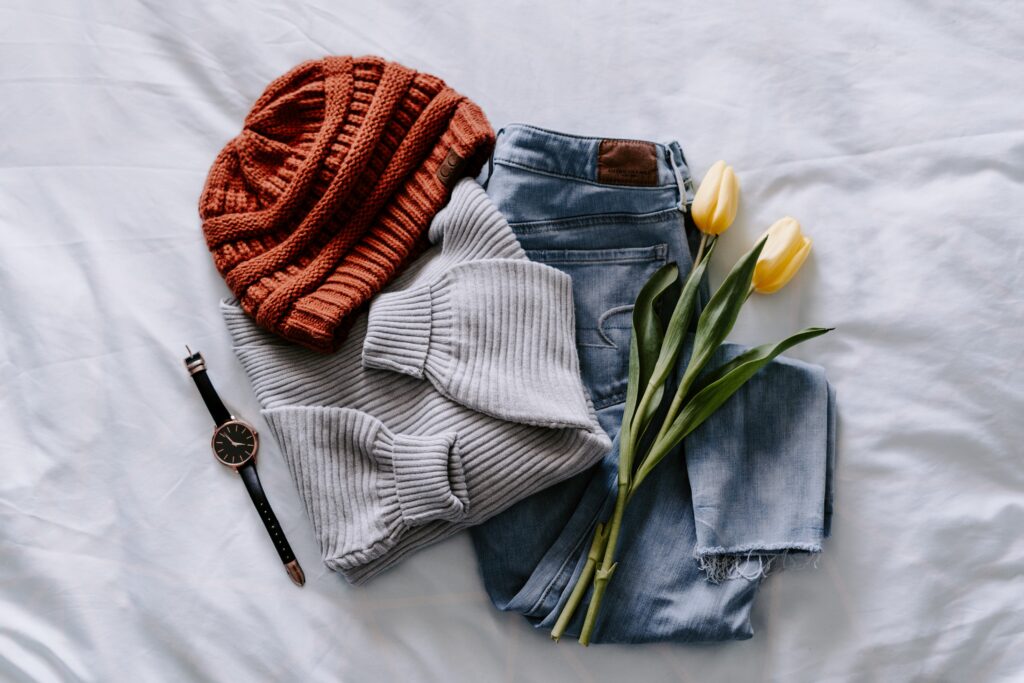
The Building Stage
4. Think All Season
Just because it’s getting colder doesn’t mean you have to pack everything away until the warmer weather returns. Mix and layer your lighter clothes with heavier, chunkier fabrics for the perfect transitional and sustainable autumn outfits. Longer socks or thermals under lighter fabrics can also help keep the autumn chill at bay.
5. Appreciate The Basics
Once you’ve taken stock of what you have and know what you’re missing, before you fill in your clothing needs start with your absolute basic necessities – socks and underwear. As simple as it sounds, never underestimate the power of a fun new pair of socks or fresh underwear. Especially when you’ve neglected your sock or underwear drawer for a while. Just try it and see if it doesn’t brighten up your day. Depending on how well you did during the inventory stage you might even be able to stop here and call it a day.
6. Thrift Knitwear
Knitwear is a go-to in fall and one of those clothing items that are almost always best thrifted. Sure you might have to sift through some crap to get to the good stuff but I feel like you have to do that in regular clothing stores anyway. At least with thrifting you’re more likely to find a unique piece and you’re saving good clothes from ending up in landfills.
7. Accessorize For All Seasons
The small but mighty accessory. It can transform an outfit and span every season, making it a powerful sustainable item in your year-round wardrobe. Belts, sunglasses, hats can be worn year round so even if you come by them in fall, if you select a timeless piece it can be worn all year round and for years to come.
8. Acknowledge The Power Of Outerwear
As fall changes to winter, and in Canada that happens far too quickly, outerwear will start to reign supreme and soon become your entire outfit. Considering the cost per wear of a good coat, if you invest (of thrift) wisely, a well loved coat can be the most sustainable item you own.

Bonus: The Maintenance Stage
9. Build A Toolkit
You don’t need a large complicated toolkit to maintain your clothes but a few key pieces can really make the difference.
- Wash Bag
A wash bag can help protect your delicates and keep microplastics from ending up in the ocean. You can get a simple wash bag from Ikea or a larger one from Guppyfriend.
- Fabric Shaver
Fabric shavers are great for removing pilling and fuzz build up on clothes. They can bring worn ragged knitwear back to life in a few minutes, saving it from the donation pile, or even worse, the landfill.
- Spot Cleaner
Washing clothes too often can damage their fibres and release up to 700,000 microfibres in a single wash. A spot cleaner can help you deal with a stain and avoid the washing machine – win win.
- Needle and Thread
Fix small tears or reattach buttons with a simple needle and thread rather than getting rid of your damaged clothing. You can even get fancy and add some embroidery to a piece to spice it up a bit.
10. Wash With Care
Taking care of your clothes and washing them carefully can help extend their life for years to come. Take note of the fabric and wash accordingly. Most will benefit from a cool wash and avoiding a tumble-dryer.
11. Store Properly
Finally, whether it’s storing your summer clothing over fall and winter, or just your everyday clothing storage, proper storage is key to maintaining your clothing. Garment bags can protect your clothes from dust and moisture and are particularly useful for coats or delicate items. Storing your clothes with room to breathe can also help prevent moisture and mold.
Sustayn is designed to present the most useful recommendations for environmentally friendly approaches and items. We update links when possible, but note that links can be broken and subject to change.



